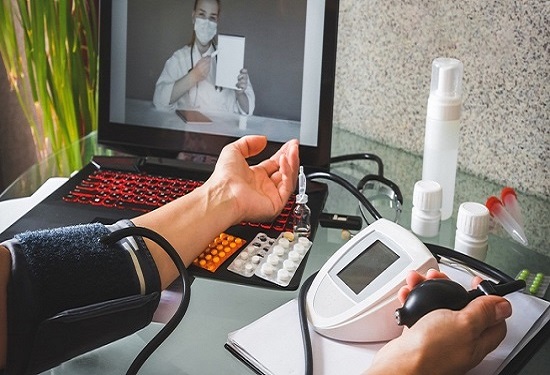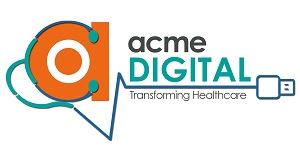Remote Patient Monitoring
Watch DEMO To see how this product works
Hospital Information System (HIS, Electronic Medical Records, Cloud PACS)
Telemedicine Service Providers
Contact Us for More Details
Watch Webinar on Remote Patient Monitoring
Remote Patient Monitoring or RPM as it is more popularly called is a one of the most significant applications of Digital Technology in the Healthcare Sector. RPM helps monitor the health condition of the Patients outside the typical Hospital or Clinic setting.
Remote Patient Monitoring Systems were especially useful during the recent pandemic when hospitals were unfortunately considered among the most unsafe zones places to be in. One of the most common and basic applications during this difficult period has been Remote Patient Monitoring Telehealth Systems, i.e., Tele-consultations, wherein Doctors would do a first level of triaging, i.e., carry out an initial assessment and sort out the mildly ill patients from the severely ill ones. Over the telephone or a video call, the Doctor would speak to the patients, gather basic information about the health condition and if found only mildly ill, prescribe basic medicines, with which they would get better. In case the patient's condition did not improve, after a few days they would be asked to come to the hospital for a physical examination and treatment. In case in the first level tele-consultation itself the doctor felt the patient condition to be serious, they would immediately be asked to come to the hospital. Tele-consultation was used extensively in the pandemic to help moderately ill patients stay safe at home, and get treated, without risking a trip to the Hospital, a veritable war zone then.
Remote Patient Monitoring (RPM) has now evolved much more thanks to development in technology to become a way by which even seriously ill patients can be monitored remotely. Latest Remote Patient Monitoring Devices, including Wearable and Internet based Diagnostic tools were used to monitor24/7, all vital parameters like blood pressure, temperature, heartbeat, oxygen levels, ECG etc. Patients, irrespective of where they were could be diagnosed, treated and monitored by Senior Specialists located hundreds or even thousands of miles away.
Remote Patient Monitoring Systems are not just convenient, but also hugely efficient and cost effective. It is seen as a very workable and practical solution to India's perennial shortage of experienced and skilled Doctors and Nurses.
Remote Patient Monitoring (RPM) is a very useful tool in the area of Chronic Disease Management too. Patients will now no more need to regularly visit their Doctors for routine checkups. They can be checked far more effectively through a Virtual Clinic, equipped with Remote Patient Monitoring Devices and Wearable. These Virtual Clinics can be located close to home thus avoiding travel and related strain and costs to the Patients.
Remote Patient Monitoring (RPM) Applications that are most gaining in use are E-ICUs, E-Ambulances, Virtual Clinics, Cloud HIS & PACS and Tele-Radiology. They are becoming very popular both in India and abroad as the Remote Patient Monitoring Benefits are becoming well known to both Private and Government Hospitals as a means of expanding quality healthcare access to small towns and rural areas, without a proportionate increase in skilled manpower. A number of Remote Patient Monitoring Startups also came into being to address this need.
ACME and TATA Communications have come together to offer some very practical applications of Remote Health Monitoring Services. A few of them are listed below. These solutions require a combination of equipment like Remote Health Monitoring Devices, Wearable and Software to manage the Application. We provide all these to you in the form of an end-to-end Remote Patient Monitoring Solutions in each of these applications as listed below. Our support also includes training your team in using the Solution and getting the desired performance.
Electronic Intensive Care Unit (E-ICUs)
Providing High Level Critical Care, supported by Senior Specialists is the biggest challenge today in the Smaller Towns and Rural Areas. Through the E-ICUs, 24/7 real-time monitoring can be done with the Critical Care Specialists sitting at the Main Hospital far away and the ICU at the peripheral centres being manned by the Duty Doctors and Nurses.
Useful tool to link up Small Hospitals in the Rural Areas, faced with the challenge of getting Senior Critical Care Specialists, to bigger more advanced Hospitals located in the Cities and major Towns. Also a big help for large Hospitals to build up a referralnetwork of Hospitals.
E-ICUs use technologies like Tele Radiology, Electronic Medical Records and Data from Telemetry Devices give quicker responses to worsening conditions, with reduced risk of human errors. Once signs of distress are noticed by the monitoring team at the Main Hospital, instructions can be given immediately to the Junior Doctors/Nurses at the bedside for treatment to be started.
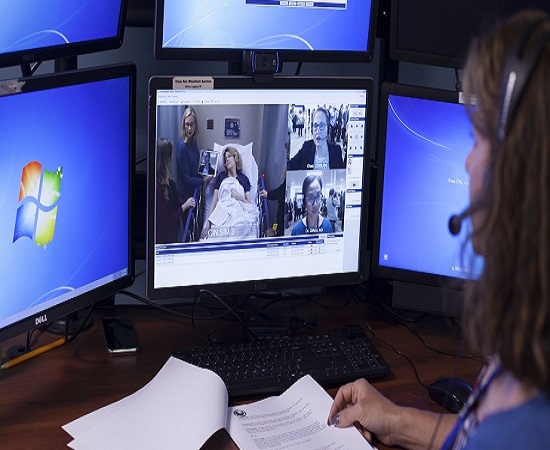
Smart Ambulance System / E-Ambulance
Very useful for advanced monitoring and providing treatment while the Patient is enroute to the Hospital. These Ambulances are equipped with the latest tracking devices too, for tracing and reaching the exact location quickly.
The Staff in the Ambulance are guided real-time in providing the CPR and other any life-saving procedures, including Caesarean Sections.
Based on Pathology and Radiology Tests conducted within the Ambulance and transmitted, the Main Hospital's Emergency Department can be better prepared for the Procedure to be done on arrival.
E Ambulance can be also used as an E - ICU in emergency situations.
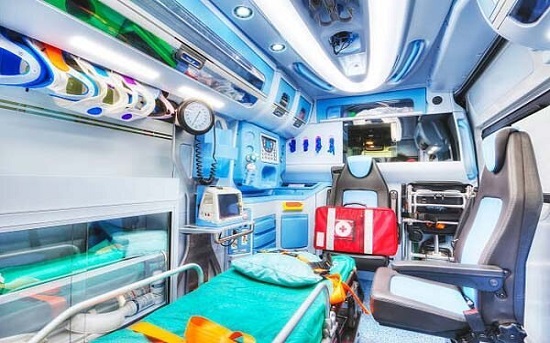
Smart Virtual Clinics
These are simple adaptations of Tele-Medicine that can help you set up full-fledged OPD Clinics, far away from the Main Hospital. These could be in neighbouring areas in the same City or Town, other parts of the District, or Country or even Abroad.
The Senior Specialist providing the Consultation would be located at the Main Hospital but would able to carry out a physical examination and diagnosis supported by advanced Digital Equipment for monitoring and evaluation.
The Specialist would get real-time information on vitals and other health parameters of the Patient through wearables and other Digital Diagnostic Tools available at the Clinic. Prescriptions can be generated and printed from the Clinic too.
The Virtual Clinic needs to be manned at best by Junior Doctors or Nurses or even Paramedics, who will facilitate Consultation and usage of the wearables.
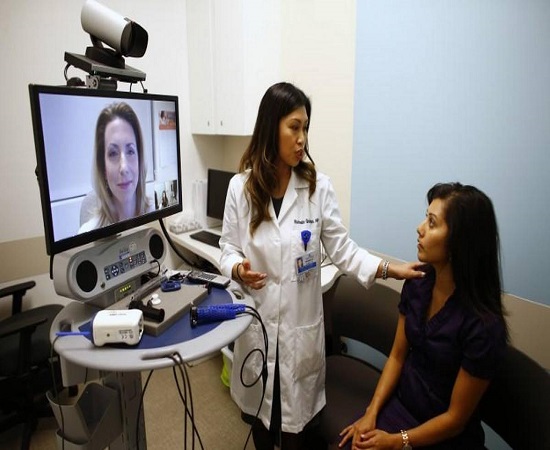
Wearable Devices for Smart Healthcare
Doctors use commercial and personal-grade wearables to monitor on a regular basis the patient's vitals, medications, recovery of post-surgery patients.
Wearable devices include Bio Chemistry Analyser, Vital Sign, Urine Strip Analyse and Haematology Analyser among several others.
In Maternal Health, such wearable based monitoring devises are very suitable like for fetal monitoring. Can be used to continuously record the heartbeat of the foetus and the contractions of the woman's uterus during labor.
Latest technologies based on IOT enables wearables to be worn as accessories, embedded in clothing, implanted in the user's body, or even tattooed on the skin.
